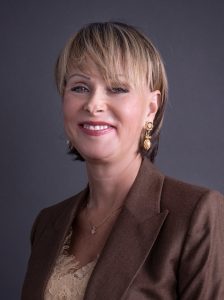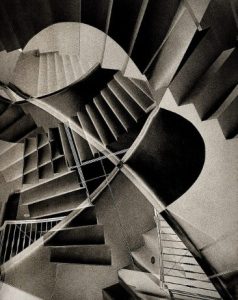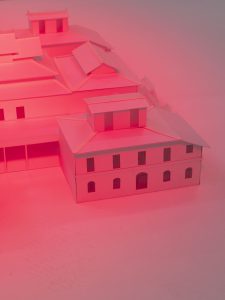Please scroll down for English
צאלים תערוכתו של אבי סבח בסדנאות האמנים בתל- אביב אינה מקבילה חזותית ל”צייד הצבאים” סרטו של מייקל צ’מינו מ 1978. סבח אינו מדבר באופן הצהרתי על האימה והקושי שהפכו למצב הוויתי בעת שרותו הצבאי בצאלים שנים אחדות אחרי אסונות צאלים א ו ב 1990ו 1992 .כמו בסרט הוא כורך אמנות ומימד סימבולי מיסטי בדיבור על חווית האלימות של צבא גם אם אינו מוחה כנגד ישות זו או אחרת. צאלים היא דיבור על מה שמחלחל ומצטרף לאקויפר תת קרקעי של כאב , שמצטבר קרוב מאד לפני השטח. דווקא משום שאין בתערוכה של סבח טרטורים,מחסומים או מראות מעוררי חלחלה של המפגש בין צבא לאוכלוסיה אזרחית תחת כיבוש היא מסמנת, את האופן בו חל שיבוש עמוק במה שאנו מתייחסים אליו כנורמטיבי. הטקסט הנלווה לתערוכה , של האוצרת ד”ר ורד זפרן גני מבטא גם הוא את הקושי להתמודד עם השיבוש הזה, וכך אחרי טקסט אבסטרקטי למדי, שכמו מגונן על אוטונומית האמנות , מוזכר בסופו שירותו הצבאי של סבח בצאלים, אופציה נוספת לקריאה של העבודות . שאלת הסדר היא עקרונית : האתיקה והאסטטיקה פועלות יחד. שני ציורים שתלוים כמעט זו מול זו הם צירי התערוכה .

הפוליפטיך בן תשעה החלקים צאלים וממול , במפלס הנמוך יותר של הגלריה , MARE , עבודה מצוירת על גב מיטה . ב”צאלים” חוזרים צבעי ורוד ותכלת כמעט ילדותיים והנוף מצויר כמו מבעד לעדשות משקפת : לצופים ניתנת אפוא נקודת מילוט –אנחנו רחוקים וזיכרונות מתקופות מוגנות נוכחים בתוך המראה הרגוע כביכול מתרחשת הדרמה. בנוף שנדמה כנוף ירח בצבעים מתקתקים מהלכות דמויות קטנות (שמזכירות באופן כלשהו את הדמויות הקוויות של מימו פלדינו Mimmo Paladino או כהן גן ) ומבנים כהים, מורכבים ולא ברורים . על ציור אחד מצויר Z גדול כמו בדיחה על דמות גיבור העל זורו הספרדי שהומצא בארה”ב בתחילת המאה הקודמת כמגן החלשים , באחרים שמש אדומה גדולה תלויה מעל להרים ,גרסה סכמטית של אין סוף דימויי שקיעה . חלקי הפוליפטיך יוצרים מה שנדמה כמעקב אחר נוף ספק מזריחה עד שקיעה ספק דמדומים זמן , מאין לא יום ולא לילה, תלוי MARE.במרכז על נייר דימוי של מה שנראה כחיה דוהרת, ספק שור, ספק סוס. הדף מודבק לרקע שמצויר כמו קיר לבנים ורודות ועליו חנית והכיתוב MARE

. המילה שפירושה באנגלית עכשווית סוסה מיתי הייתה כינוי של שד שהציק לאנשים בחלומות רעים (כמו בציור של פוסלי מ 1781 ) וכך סבח מתייחס לסיוטים ,לביטויים של אימה המתגנבים לחיי היום יום.

בשני הציורים משיחות הצבע של סבח סמיכות וחיות ,הוא חוגג את החומריות פעולת הציור כישות בעלת נוכחות. תחושה ברורה של פציעה,קריעה וחרדה עולות מעבודות הנייר של סבח. אלו עבודות קטנות העשויות על נייר המיועד להדפס ,נייר חזק במיוחד שעובר תהליך של הספגה בשמן עד שהוא מקבל צבעוניות צהבהבה מוכתמת ,שקופה למחצה כמו עור פצוע או חולה . סבח צייר על הניירות בעט טוש ודיו, באדום ושחור. הדימויים נראים כצלילה לעולם של חרדות ופחדים שמתקשרים לשרשרת הסימבוליסטית של גויה, מקס קלינגר הגרמני, גימס אנסור הבלגי או אלפרד קובין האוסטרי, כולם אמני מאה 19 וראשית המאה הקודמת.
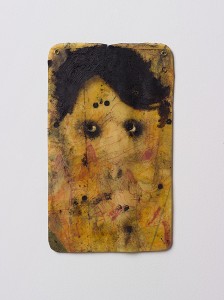
האסוציאציות לסימבוליזם נכרכות בעיסוק של סבח בהיבטים המיתיים – מיסטיים שהיו נוכחים בסביבה בה גדל במעלות בתוך משפחה מורחבת ששורשיה מצפון אפריקה, מרוקו וטוניס. זווית ההתבוננות הרב ממדית על העולם, זו הקוראת אותו גם כסמלים ורמזים (ומהדהד את רבדי הקריאה הפרשנית היהודית פשט, רמז, דרש, סוד) עלתה כבר בתערוכה קודמת של סבח בה עסק בדמויות שתי סבותיו וכאן היא נוכחת דרך אשכול, מטולטלת, סכיני נחושת התלויה מהתקרה. האשכול שמזכיר פירות אבל בעיקר משדר סכנה ופוטנציאל פציעה הוא אובייקט מאיים. הסכינים מתקשרות ללוחמה, לטקסי “שחור” .כמוהם מאיימים גם צינורות נחושת ארוכים התלויים , כמו אשכול הסכינים, מהתקרה או מונחים במפתח חלון פנימי. הצינורות שקצותיהם חרוכים שחורים מזכירים חניתות או עפרונות ענק ויוצרים מה מאין קווי מתאר של גדר, משוכה, או הפרדה,דיפוזיית מאד אך שרירה, כמו בינינו לבין זיכרונותינו. בפינה של הגלריה , ליד הפוליפטיך צאלים העמיד סבח פסל נוגה שיש בו הומור מסוים.
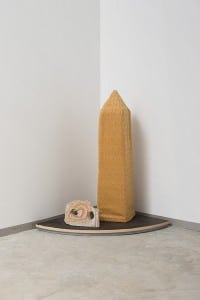
על אובליסק מוקטן מכוסה בד ריפוד העמיד אבן במיועדת לאקווריום , כזו שדגם יכולים לשחות דרך חלונות-חורים שבתוכה והכל עומד על שיש שנצבע שחור ונחרטו בו קווים כמו שדה חרוש . האובליסקים סימלו במצרים אל ונתפסן כקרן שמש שהתאבנה.כובשים שונים שדדו אובליסקים והציבו אותם כסמלי ניצחון (כך בפריז וושינגטון ורומא ועוד). יש משהו אבסורדי ומגוחך במתכוון באובליסק המוקטן, המכוסה, קצת כמו חיקוי טבע באקווריום ,כמו המודעות של האמנות למגבלות כוחה . סבח בולט כבר כעשור כאמן שיוצר שפה פיגורטיבית סימבוליסטית עשירה והבנה מרתקת של שימוש בחומר מנחושת ועד שמיכות שעירות . בתערוכה הזו הוא מרחיב את היריעה מחבר צללים וחששות ונוגע בעצבים חשופים.
צלם אלעד שריד
אוצרת ד”ר ורד זפרן גני
סדנאות האמנים, קלישר 5 תל-אביב ג – ה 15:00- 19:00 ו ושבת 11:00- 14:00
https://www.smadarsheffi.com/?p=925 לקבלת הניוזלטר השבועי רישום נפרד מקבלת בלוג החלון
Avi Sabah Tse’elim
Avi Sabah’s exhibition, Tse’elim, at the Tel Aviv Artists’ Studios, is not the visual equivalent of Michael Cimino’s film The Deer Hunter (1978). It makes no clear statement about the angst and difficulties of Sabah’s military service at the base where fatal training accidents had taken place a few years before. Like Cimino, Sabah combines art and a mystical symbolic dimension with the experience of military violence, in Sabah’s case without an explicit protest against a specific body.
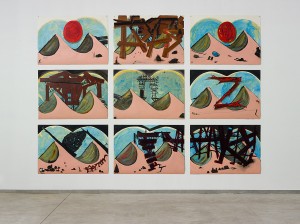
Tse’elim speaks about what filters down to the subterranean level of pain very close to the surface. Yet it is precisely because Sabah’s exhibition depicts no vicious hazing, checkpoints or scenes of IDF soldiers encountering Palestinian civilians that it marks the deep disruption in what we refer to as “normative.” Curator Dr. Vered Zafran Gani addresses the works in an abstract text, in the tradition of reading art in a formalistic manner. She is, perhaps, protective of the autonomy of art, and only at the end of the text does she mention Sabah’s army service at Tse’elim as an additional option for reading the works. The order in the text is an important issue: ethics and aesthetics work together.Two paintings nearly opposite each other form the axis on which the exhibition is arranged: the nine-part polyptychTse’elim faces Mare, painted on a wooden bedboard.
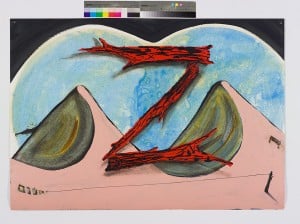
In the work Tse’elim, pink and azure appear repeatedly, almost childlike in coloring, and the landscape is drawn as if through binoculars: viewers are thus provided with an escape route; we are allowed to be distant, with memories from periods of being protected present in the scene. The landscape is calm on the surface but is the arena for drama. Small figures walk through a moon-like landscape in candy colors (reminiscent somehow of linear figures by MimmoPaladino or Pinchas Cohen Gan), with complex, unclear dark structures. On one picture, a large “Z” is drawn like a joke referring to Spanish superhero Zorro, invented in the US in the early 20th century as a protector of the weak. In others, a large red sun hangs over the mountains, a schematic version of an infinite number of sunset images. Some of the nine parts create what looks like tracking through a landscape from what may be a sunrise to sunset, perhaps twilight,evoking an apocalyptic situation of “neither day nor night,” and facing it hangs the work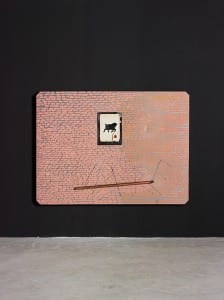 Mare.In the center of the bedboard, on paper glued to the wood, is an imageof what looks like a galloping ox-like or horse-like animal, against a background of pink bricks painted directly on the board. On it is a spear-like element and the word “Mare.” in contemporary English it is a female horse. In early English, it was the name of a nighttime demon causing bad dreams (as in Fuseli’s 1781 painting). Sabah refers to nightmares and expressions of anxietiesinfiltrating waking life. Both paintings have thick, lively brushstrokes, as Sabah celebrates the materiality of the act of painting as an entity with presence.
Mare.In the center of the bedboard, on paper glued to the wood, is an imageof what looks like a galloping ox-like or horse-like animal, against a background of pink bricks painted directly on the board. On it is a spear-like element and the word “Mare.” in contemporary English it is a female horse. In early English, it was the name of a nighttime demon causing bad dreams (as in Fuseli’s 1781 painting). Sabah refers to nightmares and expressions of anxietiesinfiltrating waking life. Both paintings have thick, lively brushstrokes, as Sabah celebrates the materiality of the act of painting as an entity with presence.
A clear sensation of wounding and tearing arises from Sabah’s works on paper. These small works are on heavy paper meant for printmaking, which has undergone a process of absorbing oil to become stained yellowish like wounded or diseased skin. Sabah used pen and red and black ink, producing images diving down into a world of fears associated with the imagery of artists of Symbolism such as Goya, German artist Max Klinger, Belgian painter James Ensor, or Austrian artist Alfred Kubin, all of the late 19th-early 20th century.
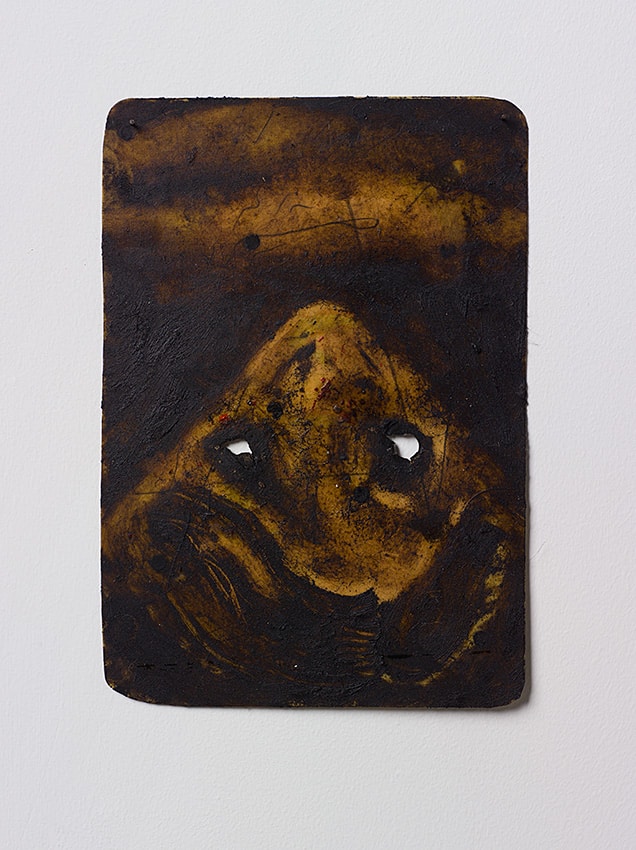
Associations to Symbolism are inherent to Sabah’s engagement in the mythical-mystical aspects present in the community in Ma’alot where he grew up, and his family’s roots in North Africa. His multifaceted viewpoint on the world, reading the world as symbols and hints (resonating with the fourfold approach to Scripture on the ascending levelsof literal, allegorical, metaphorical and mystical) was visible in Sabah’s previous exhibition which showed images of his two grandmothers. In the current exhibition, it is present in the images of the cluster of copper knives hanging from the ceiling like a pendulum. It is reminiscent of fruit, but conveys danger and potential injury as a threatening object. The knives are associated with battle and the “sh’chur” magic rituals. Long copper pipes hanging from the ceiling or placed on the ledge of an interior window, are also threatening. Their blackened edges are similar to javelins or huge sharpened pencils, creating the contours of a fence, a barrier or separation, diffuse yet very powerful, like the partition between us and our memories.

The corner piece near the polyptych is a mournful but humorous sculpture.Next to a small obelisk, covered in upholstery material, Sabah placed an aquarium stone, of the type that fish can swim through, placed on marble painted black carved with furrow-like lines. Obelisks symbolized the gods in Egypt, and were considered stone versions of a sunbeam. Various conquerors looted the obelisks and used them as a symbol of victory (e.g., Paris, Washington, Rome and others). There is something intentionally absurd and ridiculous about the reduced size of the covered obelisk, a bit like the imitation of nature intended for the aquarium, or art’s consciousness of its limited power.
Sabah has stood out over the last decade as a creative artist with a rich, symbolist figurative language and fascinating understanding of how to use various materials, from copper to hairy blankets. In the exhibition Tse’elim he broadens the canvas as he connects shadows and fears to touch exposed nerves.
Phtographer : Elad Sarig
Curator:Vered Zafran Gani
Tel Aviv Artists’ Studios, Kalischer 5, Tel Aviv, Tues.-Thurs., 3-7 p.m.
Fri – Saturday 11:00- 14:00

